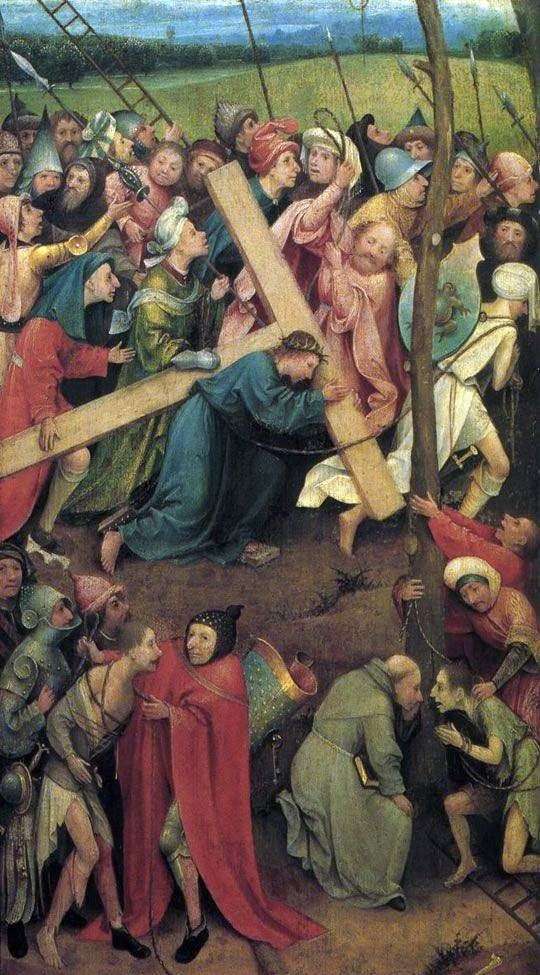
The painting “Carrying the Cross on Golgotha” was the left flank of the non-preserved triptych. This, apparently, is a fragment of a large composition, the central part of which was represented by the “Crucifixion of Christ”, and the right one – either “Descent from the Cross,” or “Lamentation,” or “Position in a Coffin.” There is an assumption that the upper part is severely cut off. The idea of the altar, referring to the period of the first mature works of Bosch, was the desire to cause in people a sense of guilt, to induce them to repent.
The painting “Carrying the Cross on Calvary” depicts Jesus Christ, who, surrounded by a crowd of torturers, bent under his heavy burden, a man beside him, perhaps Simon of Cyrene, does not help him, but only touches the cross with his hand. On the feet of Christ, not thorn sandals, but planks with protruding nails, which were used as a tool of torture. One of the guards on the shield depicts a toad, a symbol of the satanic army. Below to the right – a pious robber, he furiously confesses his sins. And here is the unrepentant robber in the lower left corner of the picture.
The cross is already at his feet, and he is looking for the eyes of the place of his execution on Calvary. He, like a wanderer in the “Boot of hay,” is depicted in tattered clothes, with one open knee and one shoe. The Son of God, the “meek lamb”, experiences not only physical suffering, but also spiritual pains – from the sight of human imperfection. In the composition, Bosch greatly enhances the role of the negative characters surrounding Christ, bringing to the fore the images of the bandits. To the motive for the salvation of the complete evil of the world through the self-sacrifice of Christ, the artist addressed himself constantly. If in the first stage of creativity the main theme of Bosch was the criticism of human vices, then, as a mature master, he seeks to create an image of a positive hero, embodying him in the images of Christ and the saints.
These classic altar compositions of large format with majestic figures filling the foreground, there is inherent solemnity and elevated mood. They are deprived of innovations, which Bosch willingly introduced into his early work. In scenes from the life of Christ, evil casts off the “carnival” masks and reveals its true face, the face of a real person who possesses a whole “bouquet” of vices – hypocrisy, cowardice, hypocrisy, cruelty, self-interest. Bosch appears in this cycle as an analyst, the subject of which is the human soul.
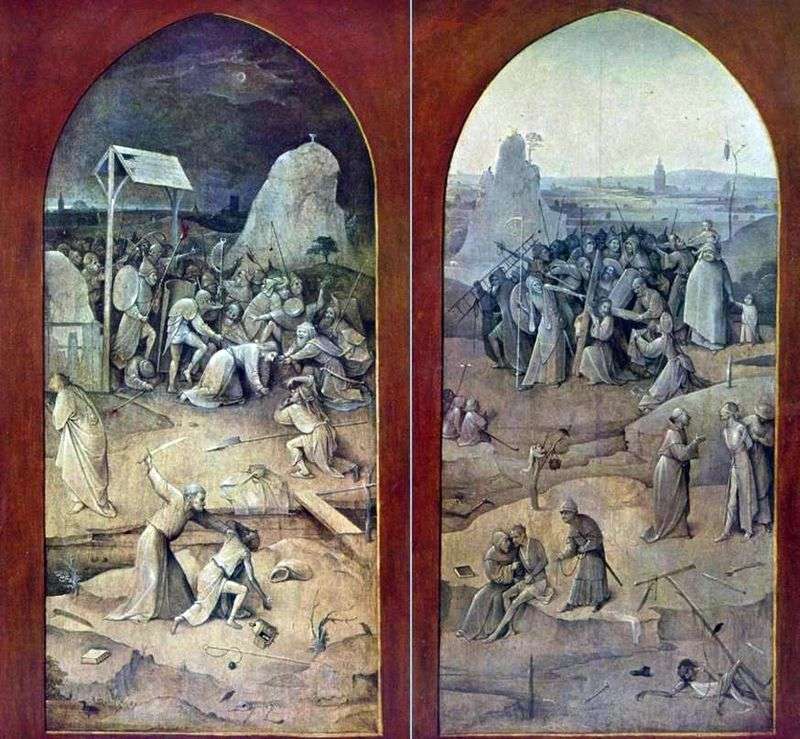 Taking in custody and Carrying the cross. The outer wings of the altar by Hieronymus Bosch
Taking in custody and Carrying the cross. The outer wings of the altar by Hieronymus Bosch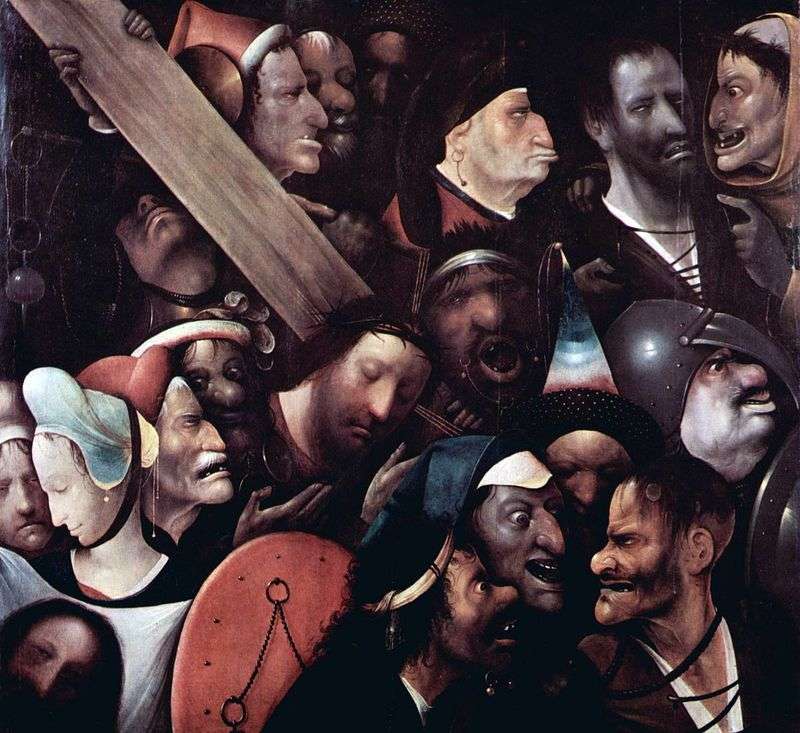 Carrying the cross by Hieronymus Bosch
Carrying the cross by Hieronymus Bosch Carrying the Cross by Simone Martini
Carrying the Cross by Simone Martini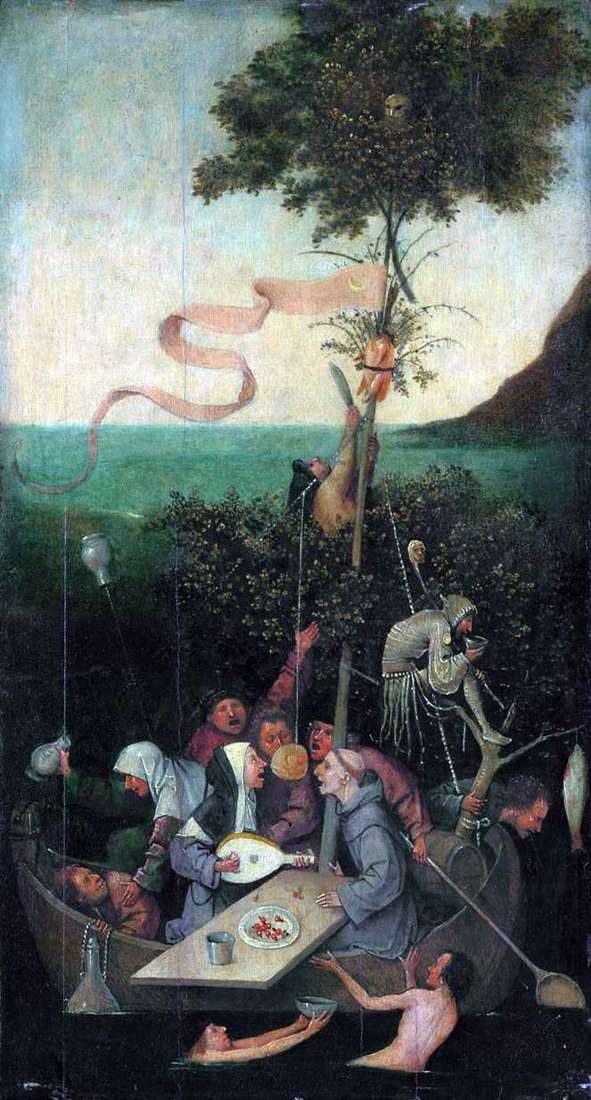 Ship of Fools by Hieronymus Bosch
Ship of Fools by Hieronymus Bosch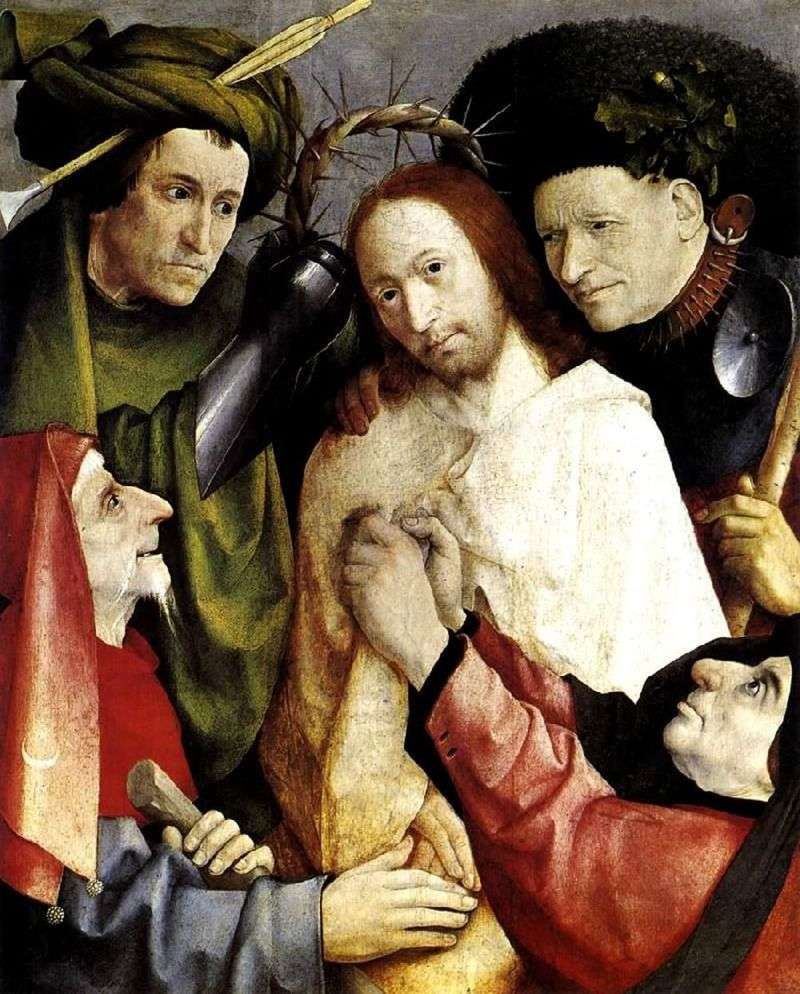 Crowning with thorns by Hieronymus Bosch
Crowning with thorns by Hieronymus Bosch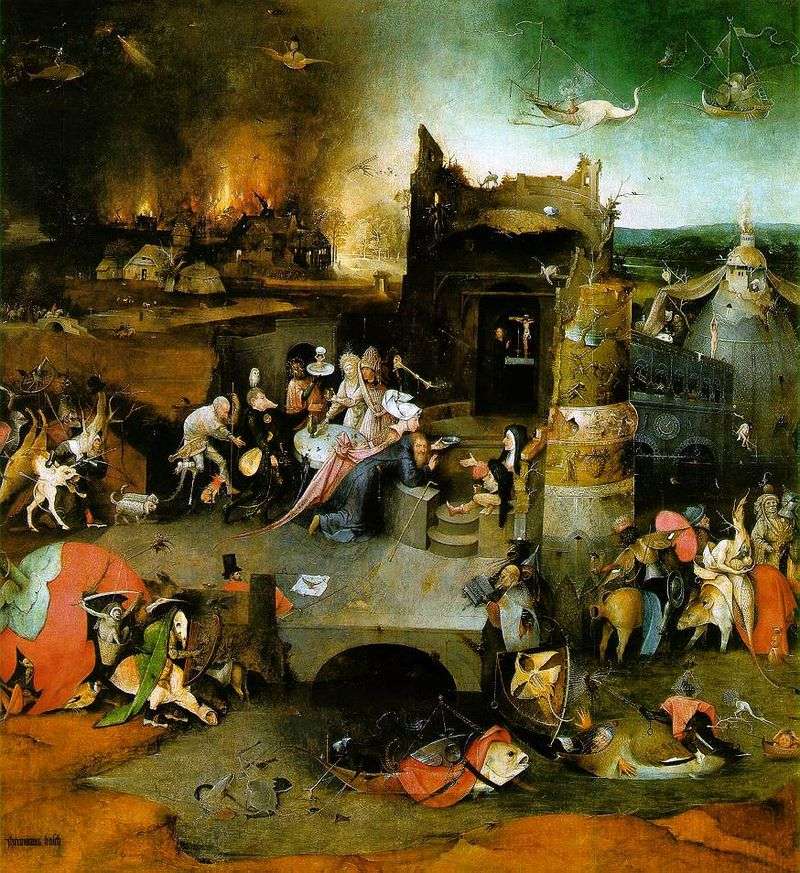 The altar of St. Anthony. The central part of the triptych is Hieronymus Bosch
The altar of St. Anthony. The central part of the triptych is Hieronymus Bosch The Crucifixion of Christ by Hieronymus Bosch
The Crucifixion of Christ by Hieronymus Bosch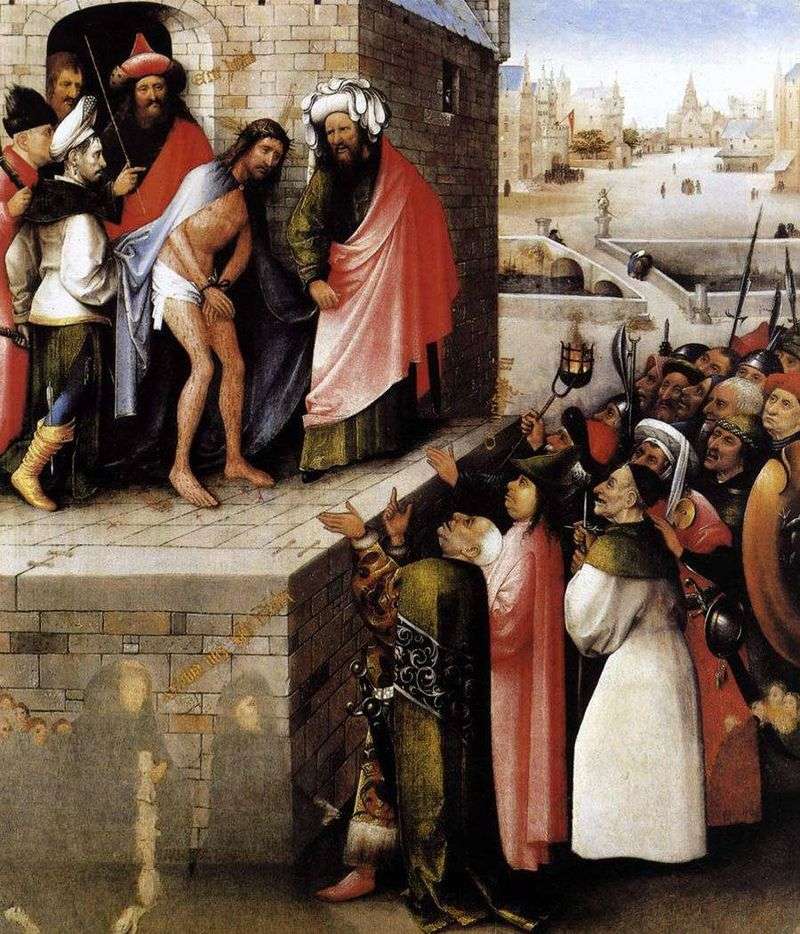 Ecce Homo by Hieronymus Bosch
Ecce Homo by Hieronymus Bosch